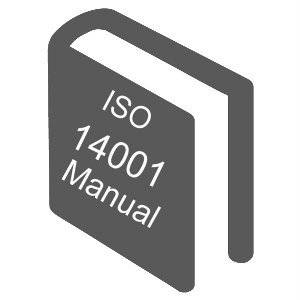The elements of our environment—air, water, food, and land—provide us with the necessities of existence. Waste that is disposed of without authorization into the earth’s natural resource pool is having a detrimental effect on the atmosphere and its ecological integrity. Only 7.5% of office garbage is recycled, even though studies indicate that over 70% of waste can be recycled. To enhance organizations’ environmental performance, the International Organization for Standardization (ISO) created the ISO 14001 Certification.
What is ISO 14001 Certification?
An Environment Management System (EMS) standard that offers a framework for maintaining the environment and cutting waste management expenses is ISO 14001. Compliance with ISO 14001 standard shows an organization’s dedication to assisting companies and other sectors in minimizing their environmental effects.
The goal of the ISO 14001 standard is to improve an organization’s environmental performance. It also assists organizations in methodically managing their environmental responsibilities, so supporting the environmental pillar of sustainability.
What is the ISO 14001 Certification Checklist?
The goal of ISO 14001 certification is to improve an organization’s environmental performance by getting rid of all practices and procedures that have the potential to harm the environment. The following are the legal requirements for the ISO 14001 certification checklist:
- Building a team
- Judging a businesses
- Indicating a leadership
- Putting in place a productive communication system
- Motivating staff members to actively participate
- Choosing the Environment Management System’s action plan and extent
- Developing a Project Plan for ISO 14001 Certification
- Offers Management Resources
- Examining and tracking the ISO 14001 Certification’s Performance
- Performing the Mandatory Internal Audit under ISO 14001
- Obtaining an ISO 14001 Certification that Encourages Sustainability and Certification
- Assessing the Outcomes
- Constant Enhancement
Key Elements of ISO 14001
Here we mention 6 key elements of ISO 14001. These elements like Environment Policy, Planning, Implementation, Study and Correctness, Review of Management, Continuous Improvements. These elements are following:
- Environment Policy: An organization must specify its stance on environmental issues. Based on its environmental policy, an organization must set business goals and targets. The sustainable development concept and the EMS performance metrics are integrated into the ISO 14001:2015 standard. To guarantee ISO 14001 certification compliance, the company must set up efficient internal and external communication.
- Planning: Planning is creating the strategies and plans needed to put the Environment Management System (EMS) into action. Efficient planning and execution facilitate an organization’s evaluation of the ecological consequences of its commercial activities. Organizations can define goals and objectives and determine compliance requirements with the use of planning.
- Implementation: Plan formulation is not nearly as valuable as efficient and effective plan execution. To respond to evolving requirements, it integrates modifications and creates new protocols. To provide staff with the required training, an organization must define, ISO 14001 documents, and communicate the implementation process. Planning for and being ready for emergencies is also included.
- Study and Correctness: After putting the EMS into place, the company analyses and makes necessary corrections while monitoring and improving its performance. To guarantee KPIs are met and that EMS efficacy is maintained, it entails assessing both new and old methods.
- Review of Management: An official assessment of an organization’s Environment Management System’s efficacy is called a management review. It is one of the most important components since it guarantees that everything is operating within the prescribed parameters. It considers new environmental issues, laws, and evolving conditions.
- Continuous Improvement: This makes sure that the Environment Management System (EMS) applies the concepts of continuous improvement and allows an organization to optimize every part of the system. The Plan-Do-Check-Act cycle is utilized in the continuous improvement concept to enhance corporate processes and procedures.







 The nature of ISO 14001:2015 allows it to be applied to the complete range of business sectors, scopes, and activities. It is a truly universal standard, which is one of its great benefits.
The nature of ISO 14001:2015 allows it to be applied to the complete range of business sectors, scopes, and activities. It is a truly universal standard, which is one of its great benefits. 